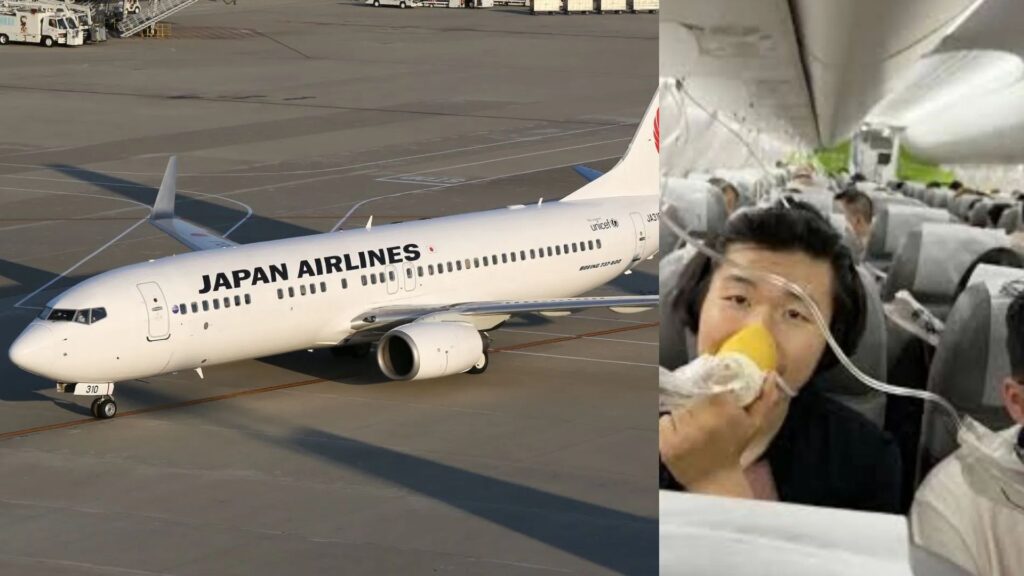Passengers aboard Japan Airlines flight JL8696 endured a harrowing experience when their aircraft suddenly dropped 26,000 feet mid-flight, prompting the emergency release of oxygen masks and widespread panic inside the cabin.
The flight, operated by Spring Japan under a codeshare with Japan Airlines, was en route from Shanghai Pudong International Airport to Tokyo Narita on June 30 when the incident occurred. The Boeing 737 aircraft was carrying 191 people at the time.
According to reports from the South China Morning Post and Associated Press, the aircraft was cruising at an altitude of approximately 36,000 feet when, around 6:53 PM local time, it experienced a mechanical malfunction related to the pressurisation system. This triggered a rapid descent to just under 10,500 feet in less than ten minutes—a standard safety measure during cabin pressure loss to ensure breathable air.
During the dramatic descent, oxygen masks were deployed automatically as cabin pressure dropped sharply. Passengers described the situation as terrifying. Many who were asleep were suddenly awakened, while others began sending emotional messages to loved ones, fearing the worst. Some reportedly wrote farewell notes or shared personal details like bank codes and insurance information, bracing for a potential crash.
In-flight video footage shows visibly distressed passengers wearing oxygen masks as flight attendants issued safety instructions amidst the chaos.
Following the emergency, the pilot diverted the aircraft to Kansai International Airport in Osaka, where it landed safely at approximately 8:50 PM local time. Fortunately, no injuries were reported among passengers or crew.
This incident adds to growing public concern surrounding the safety of Boeing aircraft. Just last month, a major crash involving a Boeing aircraft on the Ahmedabad-London route claimed 275 lives. Since then, multiple aviation incidents—many involving Boeing models—have placed the manufacturer under intense scrutiny from regulators and aviation experts worldwide.
Authorities have launched an investigation into the JL8696 incident to determine the root cause of the pressurisation failure and assess whether systemic issues are at play. Japan Airlines and Spring Japan have yet to issue detailed technical statements but confirmed that safety protocols were followed during the emergency.
For now, questions linger over Boeing’s safety assurances as aviation stakeholders call for stricter oversight and transparency in aircraft maintenance and manufacturing.

